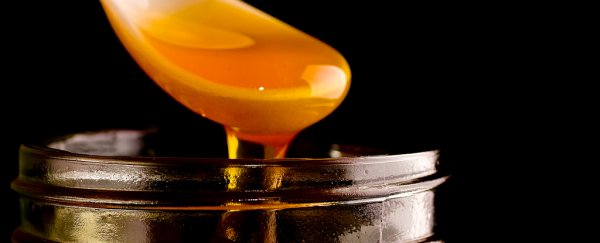A new study has found that Australian honey contains natural toxins that exceed international safety levels. The toxins are called pyrrolizidine alkaloids (PAs), which are known to cause liver damage in humans, and are suspected to lead to cancer when consumed in high doses.
Worryingly, they were found in 41 out of 59 Australian honeys tested, which had on average four times more PAs than European honeys.
Australian honey farmers have since claimed that the report relies on old data and is exaggerated, but the researchers warned that pregnant women and breastfeeding mothers in particular should limit their exposure to the toxins.
So what the hell are PAs, and how do they end up in our honey? The poisons are produced by around 600 types of pasture plants in Australia, including Paterson's curse, in an attempt to stop insect pests from eating them. When bees drink the nectar from these flowers, which they often do, the PAs can make its way into our honey.
That may not sound so bad, but research has shown that in high doses, PAs can cause severe liver damage in humans, occasionally leading to death. And there's experimental evidence in rodents and human cells prepared in the lab that these toxins can cause cancer.
This link hasn't been observed directly in humans, but John Edgar, a United Nations registered expert on PAs, told Marika Dobbin from The Sydney Morning Herald that people should avoid exposure where possible.
"Reducing the contamination in foods such as honey, teas, salads, flour, dairy and herbal products could result in a significant reduction in cancer cases worldwide," he explained.
To mitigate these risks, Food Standards Australia and New Zealand (FSANZ) allows honey to be sourced from these plants, as long as it's mixed with other honey to dilute it.
"Removing source plants is not feasible for many areas where apiaries are kept," said a FSANZ spokesperson. "Contaminants should be kept as low as achievable, therefore blending is the most practical way of reducing the levels of pyrrolizidine alkaloids."
But despite these precautions, the testing, carried out by scientists from the Cork Institute of Technology in Ireland, revealed that the average daily exposure to Australian honey consumers was 0.051 micrograms per kilogram of bodyweight for adults, and 0.204 micrograms per kilogram of bodyweight for children.
These levels greatly exceed the European Food Safety Authority maximum daily limit of 0.007 micrograms per kilogram of bodyweight, but are below the Australian limit of 1 microgram per kilogram of bodyweight.
Meanwhile, honeybee experts are claiming that the study's results are exaggerated and based on samples collected more than three years ago.
"It overstates consumption of honey and underestimates body weight, creating a really misleading conclusion that's really out of touch with reality," Jodie Goldsworthy from Victorian honey company Beechworth Honey told the ABC. "In Australia, on average, we consume about a kilogram of honey per person [per year] and in the research they used a figure that would equate to about 7.5 kilograms of honey a year [per person]."
While further testing is needed to confirm just how widespread and significant the contamination problem really is within Australian honey, experts agree that the best course of action is to avoid honey produced mostly from plants such as Paterson's curse, which is often sold at specialty markets.
"There is unlikely to be a significant human health risk from consuming normal amounts of Australian honey," said Andrew Bartholomaeus from the University of Canberra, who wasn't involved in the research. "Those consuming high levels of honey may wish to seek honey produced from other plants."
